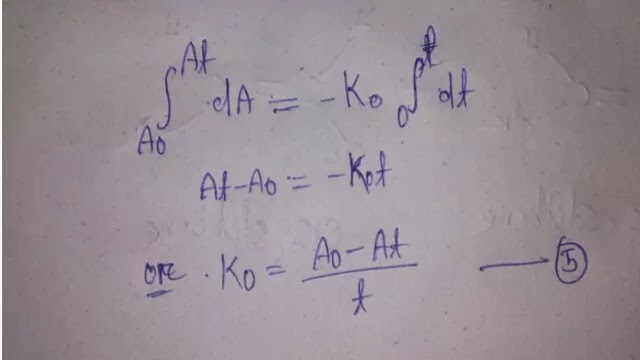DRUG METABOLISM
CONTAINTS
1.Introduction
2.Phase I Reaction
- Oxidative Reaction
- Reduction Reaction
- Hydrolytic Reaction
3. Phase II Reaction (conjunction reaction)
- Glucuronic acid conjugation
- Sulfate conjugation
- Conjugation with alpha-amino acids
- Conjugation with gultathione
- Acetyl conjugation
- Methylation
4. Factors Affecting Drug Metabolism
Click The Download Button for pdf book
👇
>>>>>>DOWNLOAD PDF⏬<<<<<<
Rest Pages :- DOWNLOAD Rest Pages.
1. INTRODUCTION
All the chemical substances that are not nutrients, which enter the body through ingestion, inhalation (or) absorption is called as xenobiotics (or) exogenous compound. Drugs are also xenobiotics by virtue of their lipophilicity. Water-soluble agents undergo renal excretion whereas lipid soluble substances are passively reabsorbed from the renal tubule into the blood after glomerular filtration. Thus if such phenomenon continues, drug would accumulate in the body and precipitate toxic reaction. However to prevent such a consequence, the body is armed with the metabolic system which transforms the water insoluble lipophilic non-polar drug into polar and water-soluble product that can be easily excreted by the kidney. This enzymatic biotransformation is known as drug metabolism. "Drug biotransformation is thus a detoxification process.
a) Sites of Biotransformation
The principle site of drug metabolism is not only the liver, but also the kidney, lungs and GI tract are also important sites. When a drug is taken orally, it is usually absorbed through mucous membrane of the small intestine or from the stomach. Once out of GI tract it is carried by the blood stream to the liver, where it is usually first metabolized. Metabolism by liver enzyme prior to the drug reaching the systemic circulation is called the presystemic (or) first pass effect, which may result in complete deactivation of drug to increase the oral bioavailability. First pass effect can be avoided by changing the route of administration. Nitroglycerin used in the treatment of angina pectoris is given sublingual route to bypass the liver. The rectal route, in the form of a solid suppository (or) in solution as an enema, leads to absorption through the colon mucosa eg. Ergotamine. Most of the drugs are administered orally. The enzymes present in body plays an important role in extra hepatic metabolism of xenobiotics. For example, the esterase and lipase present in the intestine, hydrolyses many esters. Prodrug and bacterial flora reduces many azo and nitro drugs (Sulfasalazine).
b) Pathways of Drug metabolism
Drug metabolism has been divided into two categories viz: Phase I and Phase II transformation.
Phase I:
They are enzyme biotransformation reaction, in which drug may undergo a wide variety of oxidation, reduction and hydrolysis, resulting in introduction or unmasking of functional group, which increases the polarity of the molecule and serve as a centre for the second phase of metabolic reaction. It is also called as functionalization reaction. These transformations are also called as synthetic reactions, opposite to synthetic phase II reactions.
Phase II:
The original unaltered drug or polar metabolite is conjugated to glucuronic acid, sulfate, amino acid, acetyl (or) methyl group making the molecule more polar soluble and therefore it is readily excreted.
👉first Order Reaction, Order Of Reaction, Chemical Kinetics :- click here
👉Solid state decomposition, Order of Reaction, Chemical Kinetics :- click here
👉What is Half Life and Shelf Life, Order of Reaction, Chemical Kinetics :- click here
👉Apparent Zero Order Suspension, Chemical Kinetics, Physical Pharmaceutics :- click here
👉Zero Order Reaction, Chemical kinetics :- click here
👉ORDER OF REACTION, Chemical Kinetics Free PDF Note, Pharmacy Free PDF Book :- click here
👉ORDER OF REACTION, Chemical Kinetics Free PDF Note, Pharmacy Free PDF Book :- click here
👉MOLECULARITY OF REACTION :- click here
👉PRODRUG DESIGN :- click here
👉Application Of Prodrug :- click here
👉Classification Of Prodrug.:- click here
👉PRODRUGS, :- P.Valentina. Pharmacy PDF books for students free download :- click here
👉Chemical Kinetics, CVS Subrahmanyam full PDF file. bookhata free PDF books for students. :- click here
👉Metabolism And Extraction :- click here
👉What is Protein Binding :- click here
👉General Principle of Drug Action. Medicinal Chemistry Chapter-2 :- Click here
👉Semister–V, Medicinal Chemistry E-BOOK :- Click here
👉Pharmacognocy Semister-V, PDF Book :- Click here
👉Industrial Pharmacy-I PDF book, B-Pharm 5th Semister :- Click here
👉Interfacial Phenomena By CVS Subrahmanyam √ Physical Pharmaceutics √ 3rd Semister √ Pharmacy Free PDF Books Download :- Click here
👉Pharmaceutical Jurisprudence √ 5th Semister √ Pharmacy Free PDF Book Download :- click here
👉Pharmacology of drugs acting on cardio vascular system, 5th semister Pharmacology, Pharmacy Free PDF Book Download :- Click here
👉Autocoids and Related Drugs, Pharmacology, 5th Semister, Pharmacy Free PDF Book Download :- click here
👉Drug Stability, By CVS Subrahmanyam Physical Pharmaceutics, 4th Semister, Pharmacy Free PDF Book Download :- click here
👉Rheology, By CVS Subrahmanyam Physical Pharmaceutics, 4th Semister, Pharmacy Free PDF Book Download :- click here
👉Micromeritics, By CVS Subrahmanyam Physical Pharmaceutics, 4th Semister, Pharmacy Free PDF Books For Students Download :- click here
👉What is Absorption of Drug :- click here
👉What is Distribution Of Drug ? :- click here
👉Complexation and Protein Binding By CVS Subrahmanyam, 3rd Semister, Physical Pharmaceutics, Pharmacy Free PDF Book Download :- click here
👉Drug Metabolism, Med-Chem, 4th Semister, Bookhata Free PDF Books For Students download :- click here



